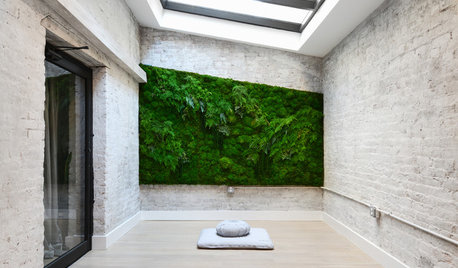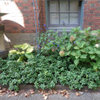Epsom Salt Uses
donna1952
16 years ago
Related Stories

HOUZZ TOURSMy Houzz: Midcentury Cool With a Killer View in Salt Lake City
An all-star cast of iconic vintage furnishings makes this Utah home period perfect through and through
Full Story
HOUZZ TOURSMy Houzz: Wanderlust-Fueled Decor in Salt Lake City
Globally gathered and family pieces bring personal warmth to a historic Utah home
Full Story
SHOP HOUZZShop Houzz: Like Salt and Pepper
Cute and kitschy ways to say ‘I love you’ with themed salt and pepper shakers
Full Story
HOUZZ TOURSMy Houzz: Modern and Moody Nostalgia in Salt Lake City
Dark, masculine and nodding to the past, this 1911 apartment is a haven for contemplation
Full Story
HOUZZ TOURSMy Houzz: Pure Simplicity Reigns in Salt Lake City
Minimalist style puts dynamic architecture and hillside views front and center in a renovated Utah home
Full Story
MY HOUZZMy Houzz: Charming Update for a 1920s Bungalow in Salt Lake City
Travel-inspired style and new finishes help the original character shine through in this designer’s home
Full Story
DECORATING GUIDESRoom of the Day: Elegant and Eclectic Salt Lake City High-Rise
Hand-blocked wallpaper sets a beautiful organic tone in this young professional’s apartment
Full Story
GREEN BUILDINGWorld of Design: The Joy of Moss and Its Modern Uses
This great design plant is 400 million years in the making. See how it’s inspiring art, soothing spaces and building design
Full Story
COLOR11 Pretty Sweet Decorating Ideas Using Pastels
Go ahead, be a softie. When you use powdery shades right, they go beyond child’s play into the realm of chic
Full Story
PATIOSLandscape Paving 101: How to Use Brick for Your Path or Patio
Brick paving is classy, timeless and a natural building material. Here are some pros and cons to help you decide if it’s right for your yard
Full StoryMore Discussions








schmoo
gardengal48 (PNW Z8/9)
Related Professionals
Clemson Landscape Architects & Landscape Designers · Harrison Landscape Architects & Landscape Designers · Kapaa Landscape Architects & Landscape Designers · Canton Landscape Contractors · Fort Payne Landscape Contractors · Golden Landscape Contractors · Lake Worth Landscape Contractors · Middleton Landscape Contractors · Porterville Landscape Contractors · South Lake Tahoe Landscape Contractors · West Orange Landscape Contractors · Destin Siding & Exteriors · Kenosha Siding & Exteriors · Manassas Siding & Exteriors · Springfield Siding & Exteriors